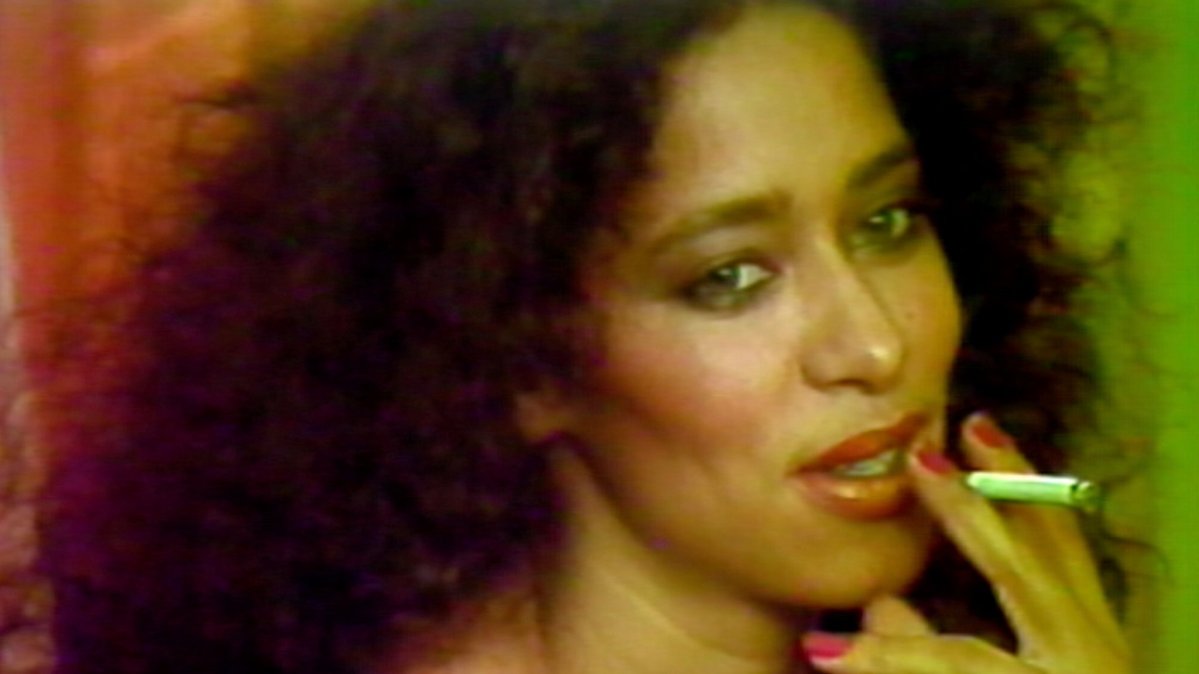At first, the 1980s film “Personal Problems” appears to be a straightforward documentary.
Johnnie Mae Brown, a nurse at Harlem Hospital Center, speaks to an interviewer off-camera about the rigors of her job, her relationship with her mother, and how her upbringing impacted her life. When she was a child, her mother was a maid who cleaned all day to pay the bills. When she came home to mess she would lash out, angry at having to continue the job for free in what ought to be her resting hours.
But this isn’t a documentary. As Johnnie Mae speaks, imagery from outside this conversation intrudes on the talking head segment: a shot of an unhoused woman on a corner juxtaposed with Johnnie Mae, who is Black, referring to her mother as a mammy for being paid to care for white children. Then, what feels like a formal inquisition melds into a fictional dialogue scene set at a different location. Johnnie Mae isn’t an actual figure. She’s a character played by the poet, food writer, and sometimes-actress Vertamae Smart-Grosvenor. For the next two hours and forty-five minutes, the audience will become intimate with her on a level few films before or since have ever matched.
Originally conceived as a television drama and soap opera by “Ganja & Hess” director Bill Gunn alongside playwright and novelist Ishmael Reed, the shoe-string budgeted project proved too experimental for its intended medium. Eventually, it evolved and was split into a two-part feature film that remains one of Black cinema’s most singular and fascinating pieces. Heavily relying on improvisation and spontaneity, Gunn and his collaborators tell a melodramatic story about a nurse in a love triangle between her husband Charles (Walter Cotton) and Raymon, the singer she cheats on him with (Sam Waymon).
Gunn and his cinematographer Robert Polidori couldn’t afford to shoot on 35mm, so the picture was captured on a primordial digital video format that places the proceedings in a dreamy middle ground between the nostalgic haze of film grain and the exacting, vivid realism of modern high definition video. The capture media imbues everyday imagery with an impressionist aura. Waves in beach water possess a metallic, molten quality, with the frame rate’s smudgy motion resembling painterly canvas strokes. But the curious visuals work in concert with the off-the-cuff nature of the storytelling.
The only piece of the original project that ended up in its final state is a monologue Waymon aims at Smart-Grosvenor. He sings to her and, in his performance, inspires a stirring level of emotion that serves as the narrative’s guidepost. Johnnie Mae became the central focus and proved to be an extraordinarily compelling figure.
Despite relying on the sensational premise familiar to soap operas of the time, the story unfolds uniquely. Scenes run longer, light on plot but heavy on texture and detail.
Throughout the picture, we’re introduced to various supporting players, but the camera’s gaze, and thus our own, never peers as deeply into any of their lives as it does into Johnnie Mae’s. We see her fraught marriage and the stress of caring for her father-in-law (Jim Wright). We see the frivolous way she treats her fling with Raymon, a man who wants more from their pairing and can’t settle for being just a fleeting plaything.
The experimental style is as much a hindrance as it is a boon. At nearly three hours length in one sitting rather than its original intended episodic shape, the film has prolonged segments and asides that bore, begging to have been excised to the cutting room floor. But between those unfortunate troughs, the film’s towering heights prove those valleys worth it. In perhaps the film’s most memorable sequence, Johnnie Mae fights for her life with her in-laws after a funeral, as her husband’s entire bloodline squabbles and blames her for their loss.
A traditional narrative might build to a loud crescendo and then cut away to the next scene of quiet rumination, but Gunn sits us uncomfortably close to the entire outburst. First, its histrionic apex, then more disturbing, the endless grumbling in its wake. We see a level of intensity and sincerity in this portrait of Johnnie Mae because of the sheer time spent with her and how invasive the camera gets into her daily life. We’re not only witnesses to her life’s most dramatic screeds but also the tiresome ennui that exists between its more sensational highlights.
“Personal Problems” gave form to a new paradigm that allowed for deeper resonance than its more scripted beginnings through necessity. Gunn and his team arrived at this aesthetic and this approach due to the financial realities of their production. Not dissimilarly, the dawn of reality TV was reliant on studios wanting cheaper programming than the increasingly pricy prospect of scripted shows. But in both cases, the results appealed to the nosy neighbor in all of us.
But where, say, “The Real Housewives of Atlanta” might provoke and entertain, every moment of artificially juiced conflict is always interrupted by confessional asides or passive-aggressive video editing. Often, these shows arrive at the contrivances of scripted fiction with extra steps feigning realism. Watching ‘Personal Problems,’ it feels like there was another, more nourishing way to scratch that itch for the audience. One that, with its raw and unfiltered portrayal of African American life, arouses more empathy than the sanctimony in modern ‘trashy’ TV’s ironic distance.
One can’t help but wonder how modern storytelling might have evolved if “Personal Problems” had been a commercial and critical success rather than an enduring curiosity for art lovers and completionists.
“Personal Problems” can be streamed free using your library card on Kanopy or as part of Metrograph’s streaming service.

